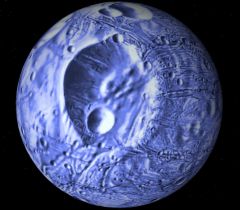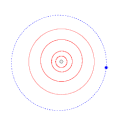Difference between revisions of "53311 Deucalion"
Jump to navigation
Jump to search
(Arvil moved page User:Arvil/Sandbox02 to 38083 Rhadamanthus: Move to article page.) Tag: New redirect |
(Created page.) Tag: Removed redirect |
||
| Line 1: | Line 1: | ||
| − | + | {| cellpadding="2" cellspacing="0" style="margin:25px 0 0 10px; border:3px solid lightsteelblue;width:250px; font-size:90%; font-family:'Arial','Helvetica'; float: right; clear: right;"Template in Orbiter" | |
| + | !bgcolor="lightsteelblue" colspan="2" align="center" |53311 Deucalion | ||
| + | |- | ||
| + | |colspan="2" align="center"|[[Image:53311Deucalion-KuiperObjectsPackZip-Orbiter2006P1.jpg|240px]] | ||
| + | |- | ||
| + | |colspan="2" align="center"|'''53311 Deucalion from ''Kuiper Objects Pack.zip'' in Orbiter 2006P1''' | ||
| + | |- | ||
| + | !bgcolor="lightsteelblue" colspan="2"|Designation | ||
| + | |- | ||
| + | |Name||align="right"|53311 Deucalion | ||
| + | |- | ||
| + | |width="30%"|Reference body||align="right" width="30%"|[[Sun]] | ||
| + | |- | ||
| + | !bgcolor="lightsteelblue" colspan="2"|Planetary mean orbits | ||
| + | |- | ||
| + | |width="30%"|Epoch||align="right" width="50%"|2005.71598173516 | ||
| + | |- | ||
| + | |width="30%"|Semimajor axis (a)||align="right" width="50%"|6637358326818 m | ||
| + | |- | ||
| + | |width="30%"|Eccentricity (e)||align="right" width="30%"|0.06323 | ||
| + | |- | ||
| + | |width="30%"|Inclination (i)||align="right" width="30%"|0.0629999989682504° <br> (0.001099557410749 radian) | ||
| + | |- | ||
| + | |width="30%"|Longitude of the ascending node (LAN, ☊)||align="right" width="30%"|51.5700000049467° <br> (0.900066295339812 radian) | ||
| + | |- | ||
| + | |width="30%"|Longitude of periapsis (ϖ)||align="right" width="30%"|286.999999995182° <br> (5.00909495313964 radian) | ||
| + | |- | ||
| + | |width="30%"|Mean longitude (L)||align="right" width="30%"|24.70671° <br> (0.431213436835408 radian) | ||
| + | |- | ||
| + | !bgcolor="lightsteelblue" colspan="2"|Selected physical parameters | ||
| + | |- | ||
| + | |width="30%"|Mean radius||align="right" width="30%"|700000 m | ||
| + | |- | ||
| + | |width="30%"|Mass||align="right" width="30%"|3.848×10<sup>20</sup> kg | ||
| + | |- | ||
| + | !bgcolor="lightsteelblue" colspan="2"|Rotation elements | ||
| + | |- | ||
| + | |width="30%"|SidRotPeriod||align="right" width="30%"|1000000 seconds (11.574 hours) | ||
| + | |- | ||
| + | |width="30%"|SidRotOffset||align="right" width="30%"|0 | ||
| + | |- | ||
| + | |width="30%"|Obliqutiy||align="right" width="30%"|0.535467015 | ||
| + | |- | ||
| + | |width="30%"|LAN||align="right" width="30%"|0 | ||
| + | |- | ||
| + | |width="30%"|Note||align="right" width="30%"|*Elements given are from Deucalion.cfg (Kuiper Objects Pack.zip) | ||
| + | |} | ||
| + | |||
| + | '''53311 Deucalion (1999 HU<sub>11</sub>)''' is a trans-Neptunian object orbiting within the [[w:Kuiper Belt|Kuiper Belt]], discovered in April 1999 by the [[w:Deep Ecliptic Survey|Deep Ecliptic Survey]]. It was named after the son of [[w:Prometheus|Prometheus]]. | ||
| + | |||
| + | == 53311 Deucalion in Orbiter == | ||
| + | 53311 Deucalion was introduced to [[Orbiter]] with the release of the add-on ''Kuiper Objects Pack.zip'' in August 2006. | ||
| + | |||
| + | {|class="wikitable sortable” style="text-align: center" | ||
| + | |- | ||
| + | |colspan="8"|<center>'''Orbiter versions and add-ons which include 53311 Deucalion'''</center> | ||
| + | |- | ||
| + | !Add-on!!Source!!Version!!Author!!Type!!Release Date!!Compatibility!!Wiki article | ||
| + | |- | ||
| + | |[https://www.orbiter-forum.com/resources/kuiper-objects-pack.3841/ Kuiper Objects Pack]||O-F Resources||2006-08-10||markl316||Scenery||11 August 2006|||| | ||
| + | |} | ||
| + | |||
| + | == See also == | ||
| + | [[w:53311 Deucalion|53311 Deucalion]] at [[w:Wikipedia|Wikipedia]] | ||
| + | |||
| + | == Gallery == | ||
| + | <gallery widths="100" heights="100"> | ||
| + | 53311Deucalion-KuiperObjectsPackZip-Orbiter2006P1.jpg|<center>58534 Logos from ''Kuiper Objects Pack.zip'' in Orbiter 2006P1</center> | ||
| + | AnimatedOrbitOf53311Deucalion.gif|<center>Animation of the orbit of Deucalion (blue) as compared to the orbits of the outer planets (red)<br>from Wikimedia Commons</center> | ||
| + | </gallery> | ||
| + | |||
| + | {{SolarSystem}} | ||
| + | |||
| + | [[Category:Articles|Logos]] | ||
| + | [[Category:Celestial bodies|Logos]] | ||
| + | [[Category:Solar System|Logos]] | ||
| + | [[Category:Trans-Neptunian objects|Logos]] | ||
Revision as of 11:35, 10 October 2024
| 53311 Deucalion | |
|---|---|

| |
| 53311 Deucalion from Kuiper Objects Pack.zip in Orbiter 2006P1 | |
| Designation | |
| Name | 53311 Deucalion |
| Reference body | Sun |
| Planetary mean orbits | |
| Epoch | 2005.71598173516 |
| Semimajor axis (a) | 6637358326818 m |
| Eccentricity (e) | 0.06323 |
| Inclination (i) | 0.0629999989682504° (0.001099557410749 radian) |
| Longitude of the ascending node (LAN, ☊) | 51.5700000049467° (0.900066295339812 radian) |
| Longitude of periapsis (ϖ) | 286.999999995182° (5.00909495313964 radian) |
| Mean longitude (L) | 24.70671° (0.431213436835408 radian) |
| Selected physical parameters | |
| Mean radius | 700000 m |
| Mass | 3.848×1020 kg |
| Rotation elements | |
| SidRotPeriod | 1000000 seconds (11.574 hours) |
| SidRotOffset | 0 |
| Obliqutiy | 0.535467015 |
| LAN | 0 |
| Note | *Elements given are from Deucalion.cfg (Kuiper Objects Pack.zip) |
53311 Deucalion (1999 HU11) is a trans-Neptunian object orbiting within the Kuiper Belt, discovered in April 1999 by the Deep Ecliptic Survey. It was named after the son of Prometheus.
53311 Deucalion in Orbiter
53311 Deucalion was introduced to Orbiter with the release of the add-on Kuiper Objects Pack.zip in August 2006.
| Add-on | Source | Version | Author | Type | Release Date | Compatibility | Wiki article |
|---|---|---|---|---|---|---|---|
| Kuiper Objects Pack | O-F Resources | 2006-08-10 | markl316 | Scenery | 11 August 2006 | ||
See also
Gallery
| edit The Solar System | |
|---|---|
| Central star |
Sun (Sol) |
| Planets |
Mercury - Venus - Earth - Mars - Jupiter - Saturn - Uranus - Neptune |
| Natural satellites |
Moon - Phobos - Deimos - Io - Europa - Ganymede - Titan - more... |
| Add-ons |
Planets - Dwarf Planets - Small objects - Natural satellites - Alternative star systems |

